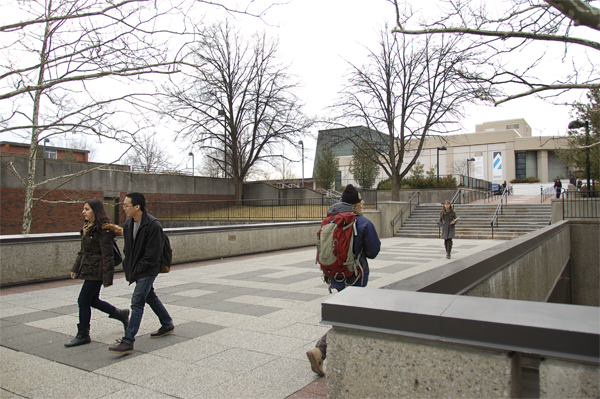

About all 30 projects in the SUNY New Paltz five-year facilities master plan are either completed or in the “process of late design or early construction,” Assistant Vice President of Facilities Management John Shupe said.
“The campus is in a much better shape than 30-plus years ago,” he said. “We now have extra capital to do stuff, while [the] last 30 [years] we didn’t. With the infrastructure and expanding, we have catching up to do.”
The current $300 million plan, covering 2009 to 2013, acts as a “road map” for the design team to follow, and it can easily be “tweaked.” The plan and capital allocation is divided into three categories: critical maintenance, strategic initiatives and residence hall projects. Shupe said President Donald Christian’s cabinet makes the final decision as to which projects in each category will receive attention.
Altogether, this $300 million figure can be broken down: $82 million for critical, $60 million for strategic and the remaining balance goes to the residence hall projects, according to Shupe.
Most in the master plan are critical maintenance. These projects are chosen based on a building assessment survey and those in need of the most repairs. They include Van den Berg, Elting Gym and Smiley Art Building. Shupe said now with the computer, the blueprints can be analyzed for any problems.
He said the money for this category of projects comes from five-year capital plans from the state legislator.
The strategic initiatives include projects like the new science building and the Sojourner Truth Library (STL) renovations. This project also includes the external renovations to STL, such as the roofing and compact shelving that took place during the first half of the winter, which was recently completed. Shupe said in terms of rooves, it’s impractical to use a flat design as it has a shorter lifespan than one with a dimension or shape.
Meanwhile, John McEnrue, director of facilities design and construction, said the internal renovations of STL serve two functions.
“The work that we are doing does improve aesthetics of the campus but that happens to be an added benefit,” he said. “The five-year facilities plan is being implemented for specific programmatic needs. In the STL’s case, we are improving the facility to accommodate student demands for the 21st century. This includes technologically enhanced collaborative study areas as well as wireless capabilities for individual usage.”
The timetable for the library renovation and the breaking ground for the Mohonk Walk project in preparation for the new science building have been set, according to McEnrue.
“With regard to our Mohonk Walk project, we are improving pedestrian traffic flows by creating an east to west allee, similar to the north to south Concourse, at the academic core of the campus and in preparation for the future Science Building,” he said. “The library renovation will begin after commencement this spring whereas the Mohonk Walk project begins following spring break at the end of March.”
The funding for this category also comes from the state legislators “up in Albany.”
The final category is residence hall projects. Shupe said this is a “new category” and there is no state funding for these types of projects. Shupe said “state fees” are used to pay the costs.
Still, Shupe said the bulk comes from renovations, and the projects come from physical needs such as the interim provost seeing academic programs expanding. Shupe said there isn’t a lot of construction for new buildings.
“[The idea is] to clean up what we have here,” Shupe said.
However, Shupe said renovations aren’t cheap. From 2003 to 2008, there was a stated cost of $55 million for projects. This number has risen to $300 million from 2009 to 2012. He said his staff expanded to make this work.
“We’re on track with most of the projects,” he said. “Just hope the funding doesn’t dry up.”
Shupe said to pick a number one priority project would be “political.” He said he doesn’t have a number one and all the projects should be taken care of. McEnrue, on the other hand, said time will be dedicated to Old Main since it was a “signature project” in the previous five-year plan.
The only project that seemed to drag its feet was the pool replacement in the Athletic and Wellness Center. Shupe said that the feasibility and number crunching has been completed for the full design.
There was also an issue with putting the master plan online due to getting through “red tape” with the Department of Communication and Marketing.
